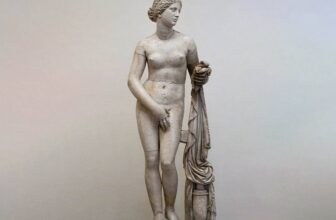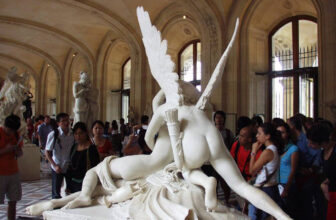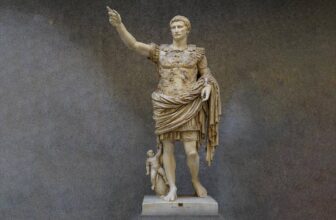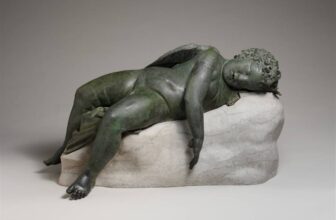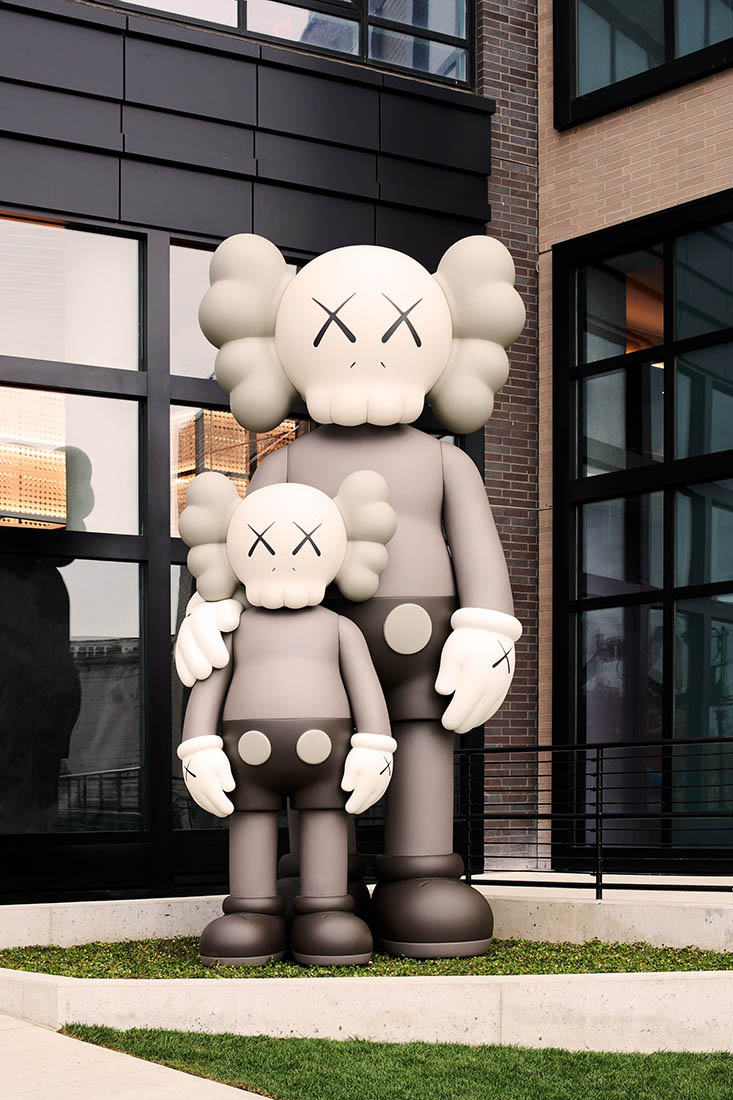
What Is the Meaning of the Companion in KAWS
In the ever-evolving landscape of contemporary art, few figures have carved out as distinctive a niche as Brian Donnelly, better known by his artist moniker KAWS. A former graffiti artist turned cultural powerhouse, KAWS has captivated global audiences with his instantly recognizable characters, bold lines, and striking fusion of street and fine art. Yet, among all his creations, one stands above the rest: the Companion.
This iconic figure, part melancholic cartoon, part universal symbol of alienation, has become more than just a recurring character in KAWS’ oeuvre. It has transformed into a contemporary cultural symbol that bridges the realms of high art, popular culture, fashion, and commerce. But what exactly is the Companion? What does it represent? And how did it go from subway graffiti to multimillion-dollar sculptures exhibited across the world?
Let’s explore the story behind the KAWS Companion, its significance, how it’s made, and why it continues to resonate with audiences worldwide.
The Birth of a Companion
Brian Donnelly began his creative journey in Jersey City, New Jersey. In the early 1990s, he entered the world of graffiti under the pseudonym KAWS, a name chosen for its visual balance rather than any particular meaning. His early work was illegal, subversive, and playful, he would often alter advertising posters in bus shelters and phone booths in New York City, inserting cartoonish skull-headed characters into familiar commercial images.
It was during this period that the idea of Companion began to take root. Inspired by the expressive language of cartoon figures like Mickey Mouse, the Companions reflected his interest in the universality of animation, yet with a distinct twist. KAWS’ Companion featured a skull-and-crossbones face with crossed-out eyes, symbolizing a kind of spiritual exhaustion or existential fatigue.
This unique figure was first produced as a toy in 1999 in collaboration with Japanese streetwear brand Bounty Hunter, and from there, it took off.
What Is the Meaning of the Companion in KAWS?
The KAWS Companion is more than just a character, it’s a symbol of modern emotional experience. While its appearance is whimsical and cartoonish, the body language and gestures often express deeply human emotions such as sadness, anxiety, vulnerability, and introspection.
One of the most famous Companion poses is “Companion (Passing Through),” which shows the figure sitting on a bench, slouched forward, head in hands, an instantly relatable expression of despair or reflection. Other variations show the Companion covering its face in shame, lying flat on the ground, or holding its head as if overwhelmed.
By marrying childlike visual aesthetics with adult psychological themes, KAWS created a figure that resonates with people across cultures. The Companion doesn’t speak, but its emotions are unmistakable, making it a powerful commentary on the emotional complexity of contemporary life.
How Are KAWS Companion Sculptures Made?
While the early Companions were made as vinyl toys or figurines, KAWS began experimenting with large-scale sculpture in the 2000s. The production process is meticulous and global. Here’s a step-by-step outline of how a KAWS Companion sculpture comes to life:
1. Concept Design
Every sculpture starts with a concept drawing. KAWS maintains complete creative control over the design process, sketching out poses, proportions, and expressions.
2. 3D Modeling
Once the concept is finalized, it is translated into a digital 3D model. This allows for precision in scaling and engineering, especially when the sculptures are meant to be monumental.
3. Material Selection
Depending on the intended size and location, Companions are made from various materials:
Vinyl (for small collectibles)
Fiberglass (for gallery-size works)
Bronze (for permanent outdoor installations)
Wood, aluminum, or inflatable nylon for special editions
4. Fabrication
KAWS works with high-end manufacturers and fabricators in Japan, Germany, and the U.S. These teams handle casting, welding, painting, and assembling the massive structures. The surface is often finished in flat matte colors, a signature KAWS look.
5. Installation
Once fabricated, the sculptures are shipped and installed, sometimes in public plazas, sometimes inside world-renowned museums.
This elaborate, handcrafted process contributes significantly to the value and exclusivity of each piece.
What Is KAWS’ Most Famous Art Sculpture?
Though KAWS has created many striking works, “Companion (Passing Through)” is widely considered his most iconic.
This sculpture, first unveiled in 2010, is a towering figure of the Companion seated with its head buried in its hands. It’s been displayed in locations including:
The Aldrich Contemporary Art Museum, Connecticut
The 15th Street Plaza, Hong Kong
Modern Art Museum of Fort Worth, Texas
Brooklyn Museum, New York
Other notable sculptures include:
“KAWS: HOLIDAY” – A series of giant inflatable Companions, including a 121-foot-long reclining Companion that floated in Victoria Harbour, Hong Kong in 2019.
“Gone” (2019) – A 121-inch bronze statue showing a Companion carrying another lifeless BFF character, exploring grief and loss.
“Small Lie” (2018) – A 32-foot wooden figure installed in Yorkshire Sculpture Park, UK, evoking shame and guilt.
Each sculpture explores different emotional landscapes, and part of KAWS’ genius lies in expressing such profound depth through what appears to be a cartoon figure.
How Much Are KAWS Art Sculptures Worth?
The art market has responded fervently to KAWS’ rise, with Companion sculptures fetching millions of dollars at auctions. Some of the most notable sales include:
“The KAWS Album” (2019) – While not a sculpture, this painting sold for $14.8 million at Sotheby’s Hong Kong.
“Companion (Resting Place)” – Sculptures from this series have sold for $1–$2 million depending on size and material.
Vinyl Companions – Even the small toy editions can command $1,000–$50,000, depending on rarity and condition.
The rarity, material, size, and edition number are all key drivers of value. Limited editions or one-of-a-kind pieces naturally fetch the highest prices.
Why Are KAWS Companions So Expensive?
Several factors contribute to the astronomical prices of KAWS Companions:
1. Limited Supply
KAWS typically releases his pieces in limited editions, often with fewer than 500 pieces per series. This scarcity drives up demand, especially among collectors and investors.
2. Cultural Crossover Appeal
Unlike many traditional artists, KAWS’ work straddles multiple cultural zones:
Streetwear (collaborations with Supreme, Nike, Uniqlo)
Fine art (exhibitions at major museums)
Design (furniture and decor)
Pop culture (influences from Disney, The Simpsons, etc.)
This broad appeal means his fan base ranges from art collectors to sneakerheads to celebrities like Pharrell Williams and Kanye West.
3. Emotional Resonance
Companion is not just a collectible; it’s a mirror of our emotional state. It taps into the shared human experience, making it universally relatable, and that gives it value beyond aesthetics.
4. Museum Presence & Critical Acclaim
As KAWS sculptures continue to be featured in prestigious galleries and public art programs, their institutional validation further cements their value in the art world.
How Many KAWS Companions Were Made?
The exact number of KAWS Companions created over the years is difficult to pinpoint because they span various forms and materials, vinyl toys, fiberglass sculptures, inflatables, wood carvings, and more.
However, estimates suggest:
Tens of thousands of vinyl Companion toys (in various sizes and colorways) have been released since 1999.
Dozens of large-scale Companion sculptures have been created for exhibitions, public installations, and collectors.
The “KAWS: HOLIDAY” inflatable series consists of 5-6 massive installations across the globe.
Because many of the toy versions are released in limited runs of 100–1000, they remain rare in the marketplace, especially in mint condition.
Where Are KAWS Art Sculptures Located?
KAWS has installed Companion sculptures around the world, often in major cities, parks, and museums. Here are some notable locations:
1. United States
Brooklyn Museum, New York
Yuz Museum, Los Angeles
Modern Art Museum of Fort Worth, Texas
High Line, New York (exhibited inflatable Companion)
Skirball Cultural Center, Los Angeles
2. Asia
Victoria Harbour, Hong Kong (“KAWS: HOLIDAY”)
Changbai Mountain, China (snow Companion installation)
Seoul Olympic Park, South Korea
Chiang Kai-shek Memorial Hall, Taipei
3. Europe
Yorkshire Sculpture Park, UK (“Small Lie”)
Galerie Perrotin, Paris (frequent exhibitions)
4. Online and NFTs
KAWS has also entered the digital realm, collaborating with platforms like Acute Art for augmented reality (AR) Companions, and releasing limited NFTs that reflect his sculptures in virtual environments.
The Legacy of KAWS’ Companion
What began as a graffiti tag has blossomed into a phenomenon that redefined the boundaries between street art and high art, between pop culture and fine sculpture. The Companion is not just an artwork, it’s a universal symbol of shared emotion, a totem of 21st-century anxiety, loneliness, and the search for connection.
Its silence speaks volumes. Its gestures evoke empathy. And its presence, whether a 3-foot figure on a shelf or a 40-foot sculpture on a skyline, demands attention.
In the words of KAWS himself:
“I just want my work to be accessible to as many people as possible. Whether it’s in a museum or on a t-shirt, it’s about creating a shared visual language.”
In a world increasingly fractured, the KAWS Companion stands as a quiet, enduring figure, hands over its face, head bowed, heart open.
The KAWS Companion is more than a pop-art sculpture. It’s a global mirror, a companion to all who’ve felt overwhelmed, introspective, anxious, or alone. Through its poignant design, masterful fabrication, and transcendent emotional clarity, it has become one of the most important and recognizable sculptures of the 21st century.
Whether you’re admiring it in a Tokyo gallery, floating past it in Hong Kong’s harbor, or unboxing a vinyl edition from your favorite streetwear drop, the Companion remains, faithfully, silently, watching.
And maybe, just maybe, understanding. image/architecturaldigest.com
